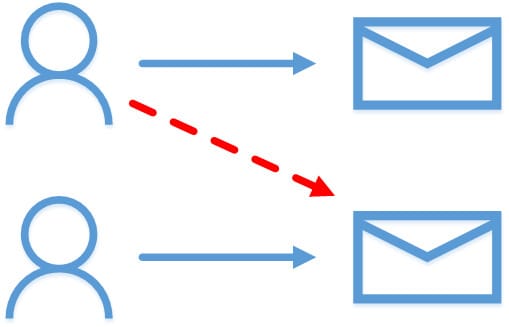Fixing ‘No Existing Permission Entry Found for User’ Error in Set-MailboxFolderPermission

Mailbox folder permissions are critical for collaboration in Microsoft Exchange Online and Exchange on-premises. However, administrators often encounter errors while managing permissions using PowerShell. One such error is:
Set-MailboxFolderPermission – There is no existing permission entry found for user
This article explains the root cause of this error, its implications, and provides step-by-step instructions to resolve it effectively.
What Causes the Error?
The error occurs when the Set-MailboxFolderPermission cmdlet is used to modify permissions for a user who does not have existing permissions on the specified mailbox folder.
Key Points to Note:
- The Set-MailboxFolderPermission cmdlet is designed to modify existing permissions but cannot create new permissions.
- If a user does not already have folder access, the cmdlet fails, resulting in the error message.
- Permissions must be added first using the Add-MailboxFolderPermission cmdlet.
Common Scenarios That Trigger the Error
- Attempting to grant additional permissions without first assigning any permissions.
- Running the Set-MailboxFolderPermission cmdlet on a new user who has never been granted access.
- Typographical errors in the user or folder identity while executing commands.
- Trying to update permissions on non-existent folders or incorrect folder paths.
Solution: Fixing the Error Step-by-Step
Step 1: Verify Existing Permissions
Use the following command to check if the user already has permissions:
Get-MailboxFolderPermission -Identity "MailboxName:\FolderName"
Replace MailboxName with the target mailbox email and FolderName with the specific folder, e.g., Calendar.
Example:
Get-MailboxFolderPermission -Identity "user1@domain.com:\Calendar"
- This command displays the list of users and their permissions for the specified folder.
- If the user is not listed, it confirms that no permissions exist.
Step 2: Add New Permissions
If the user is not listed, use the following command to add permissions:
Add-MailboxFolderPermission -Identity "MailboxName:\FolderName" -User "UserName@domain.com" -AccessRights Editor
Parameters:
- MailboxName: Target mailbox.
- FolderName: Specific folder, e.g., Calendar.
- UserName: Email address of the user requiring permissions.
- AccessRights: Permission level (e.g., Editor, Owner, Reviewer).
Example:
Add-MailboxFolderPermission -Identity "user1@domain.com:\Calendar" -User "user2@domain.com" -AccessRights Editor
Step 3: Modify Permissions (If Already Assigned)
Once the permissions exist, modify them using the Set-MailboxFolderPermission cmdlet:
Set-MailboxFolderPermission -Identity "MailboxName:\FolderName" -User "UserName@domain.com" -AccessRights Reviewer
Example:
Set-MailboxFolderPermission -Identity "user1@domain.com:\Calendar" -User "user2@domain.com" -AccessRights Reviewer
Step 4: Remove and Re-add Permissions (Optional)
If issues persist, remove and re-add permissions:
Remove permissions:
Remove-MailboxFolderPermission -Identity "MailboxName:\FolderName" -User "UserName@domain.com"
Re-add permissions:
Add-MailboxFolderPermission -Identity "MailboxName:\FolderName" -User "UserName@domain.com" -AccessRights Editor
Best Practices for Managing Mailbox Folder Permissions
- Verify Folder Path: Ensure the folder path is valid, especially for non-default folders.
- Assign Minimal Permissions: Only assign necessary permissions to limit unauthorized access.
- Test Changes on a Single User: Before applying bulk changes, test permissions on one user to avoid errors.
- Backup Permissions: Export existing permissions as a CSV file before making changes:
Get-MailboxFolderPermission -Identity "MailboxName:\FolderName" | Export-Csv -Path "C:\PermissionsBackup.csv"
- Audit Permission Changes: Keep logs of all modifications for compliance purposes.
Frequently Asked Questions
1. What folder names can I specify?
Common folder names include Inbox, Calendar, Contacts, and Tasks. Use the full path if targeting subfolders.
2. How can I remove permissions for multiple users?
Use a loop in PowerShell:
Get-MailboxFolderPermission -Identity "MailboxName:\Calendar" | ForEach-Object {
Remove-MailboxFolderPermission -Identity "MailboxName:\Calendar" -User $_.User
}
3. What permissions are available?
Permissions include:
- Owner: Full control over the folder.
- Editor: Create, read, modify, and delete items.
- Reviewer: Read-only access.
Conclusion
The error "No existing permission entry found for user" occurs when trying to modify permissions for a user who has no prior permissions assigned. Resolving this involves adding the permissions first with Add-MailboxFolderPermission and then modifying them if needed.
By following the outlined steps, administrators can avoid permission-related issues and streamline mailbox folder access management.
Need Help Managing Exchange Permissions?
Medha Cloud provides expert assistance for Microsoft Exchange and M365 administration. From setting up permissions to troubleshooting errors, our team ensures smooth collaboration and data security.
Contact Medha Cloud Today for professional support!
Reach us at:
- India: +91 93536 44646
- US: +1 646 775 2855
- Website: medhacloud.com
- Email: info@medhacloud.com